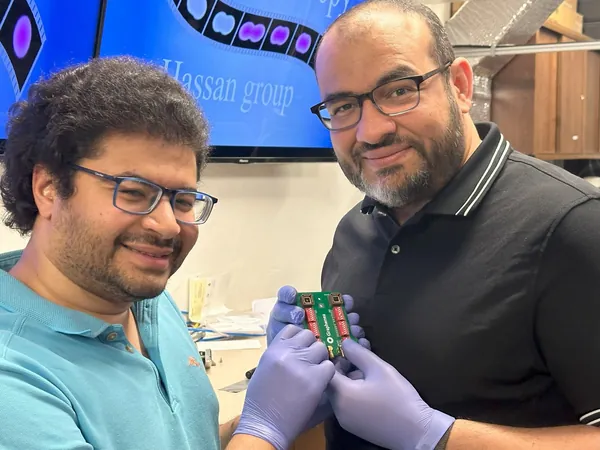
Revolutionizing Computing: The Quest for Petahertz-Speed Transistors
2025-05-19
Author: Benjamin
Imagine a world where computers process data a million times faster than today's top models! Researchers, including a dynamic team from the University of Arizona, are on the brink of making that a reality.
In an ambitious international project, scientists have discovered a groundbreaking method to manipulate electrons in graphene using ultra-short light pulses, each lasting less than a trillionth of a second. By harnessing a remarkable quantum phenomenon known as tunneling, they've recorded electrons effortlessly bypassing barriers, significantly expanding the boundaries of computer processing capabilities.
Their exciting findings, published in *Nature Communications*, suggest that we could soon achieve processing speeds in the petahertz range—over 1,000 times faster than anything currently on the market. "Sending data at such astonishing speeds could transform the very fabric of computing," remarked Mohammed Hassan, an associate professor involved in the research. He highlighted the disparity between rapid advancements in software—especially in artificial intelligence—and the lagging evolution of hardware.
Hassan believes that leveraging quantum discoveries could propel hardware development in tandem with leaps in software technology. This innovative approach could reshape industries like space research, healthcare, and chemistry, effectively lighting a path to ultrafast computers that power our future.
Working with an expert team—including Nikolay Golubev, Mohamad Sennary, and Jalil Shah—the researchers collaborated with institutions like Caltech's Jet Propulsion Laboratory and Ludwig Maximilian University in Germany. Initially, they were investigating the electrical conductivity of modified graphene samples, a sheet just one atom thick made entirely of carbon.
Their experimentation revealed that when a laser interacts with graphene, it can excite electrons to create a current. However, under certain conditions, these currents can cancel each other out, resulting in no detectable flow due to the symmetrical structure of graphene.
Then came the eureka moment: what if an electron could traverse through the graphene barrier? Astonishingly, their modifications allowed for this tunneling phenomenon to occur in real time.
Hassan’s excitement was palpable: "The best part of science is discovering the unexpected. We anticipated certain results, but it’s the surprises that truly enrich our understanding. Once we recognized the tunneling effect, our curiosity drove us to explore further."
Utilizing an advanced graphene phototransistor enhanced with a silicon layer, the team employed a laser that operates on a staggering frequency of 638 attoseconds, resulting in what Hassan deems "the world’s fastest petahertz quantum transistor." For context, an attosecond represents one quintillionth of a second!
While many breakthroughs necessitate controlled environments, this revolutionary transistor functions under standard ambient conditions—an important step toward making the technology commercially viable for everyday electronics.
Hassan is collaborating with Tech Launch Arizona, an initiative dedicated to translating groundbreaking research into marketable innovations. Although the initial technologies utilized specialized lasers, the team is developing a transistor that can be used with commonly available equipment.
"Our goal is to partner with industry leaders to bring this petahertz-speed technology to microchips," he stated. "The University of Arizona has already made its mark with the fastest electron microscope—now we aim to be pioneers in petahertz-speed transistors too!"









 Brasil (PT)
Brasil (PT)
 Canada (EN)
Canada (EN)
 Chile (ES)
Chile (ES)
 Česko (CS)
Česko (CS)
 대한민국 (KO)
대한민국 (KO)
 España (ES)
España (ES)
 France (FR)
France (FR)
 Hong Kong (EN)
Hong Kong (EN)
 Italia (IT)
Italia (IT)
 日本 (JA)
日本 (JA)
 Magyarország (HU)
Magyarország (HU)
 Norge (NO)
Norge (NO)
 Polska (PL)
Polska (PL)
 Schweiz (DE)
Schweiz (DE)
 Singapore (EN)
Singapore (EN)
 Sverige (SV)
Sverige (SV)
 Suomi (FI)
Suomi (FI)
 Türkiye (TR)
Türkiye (TR)
 الإمارات العربية المتحدة (AR)
الإمارات العربية المتحدة (AR)